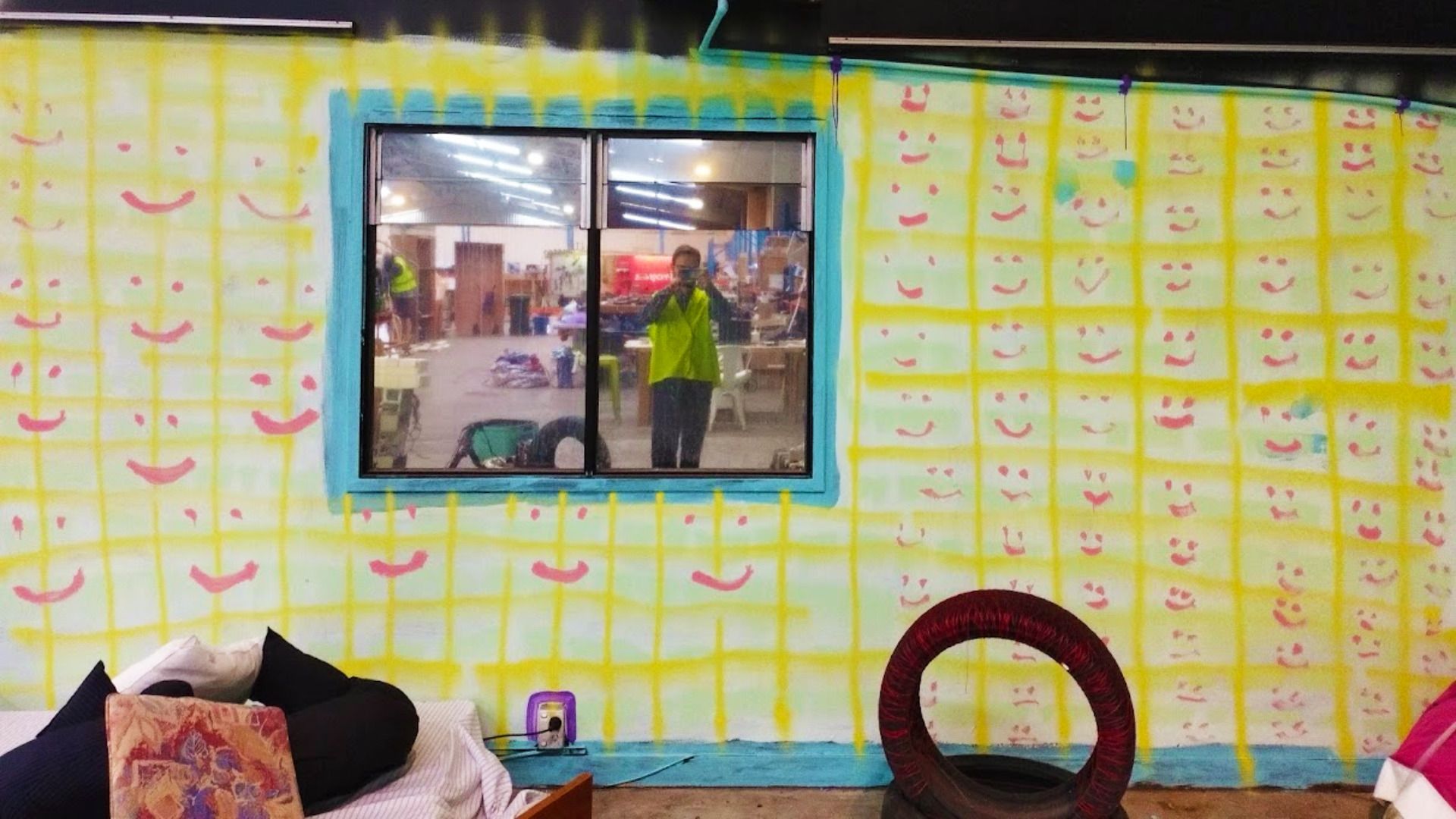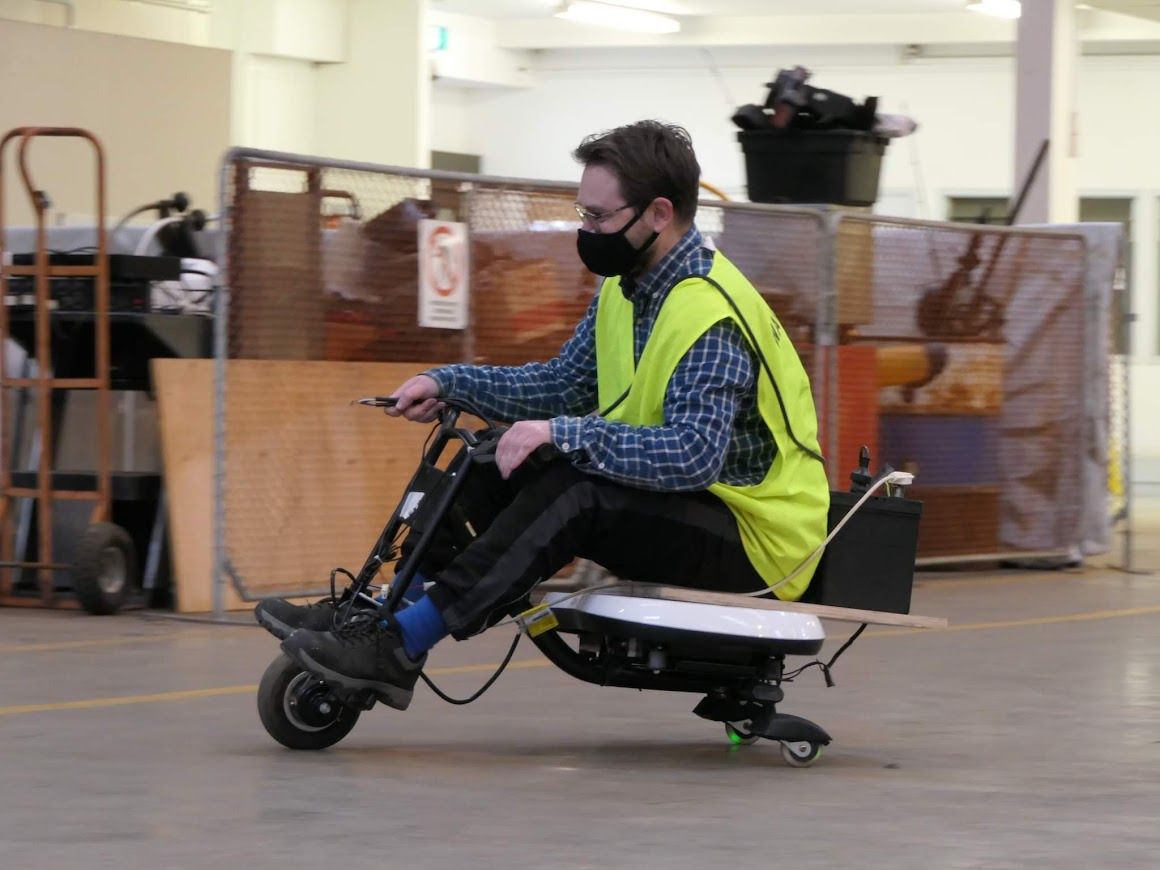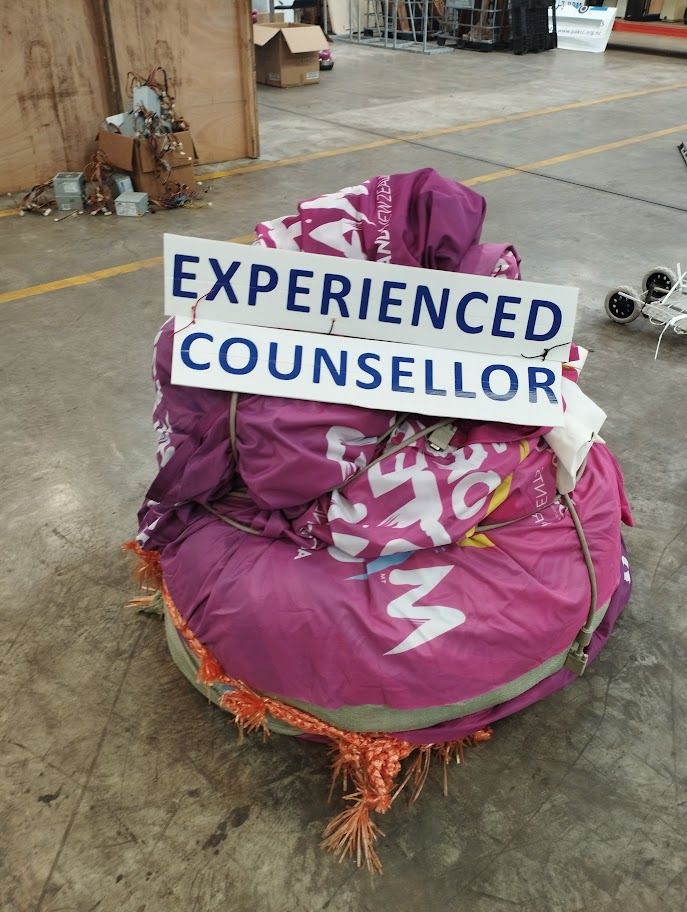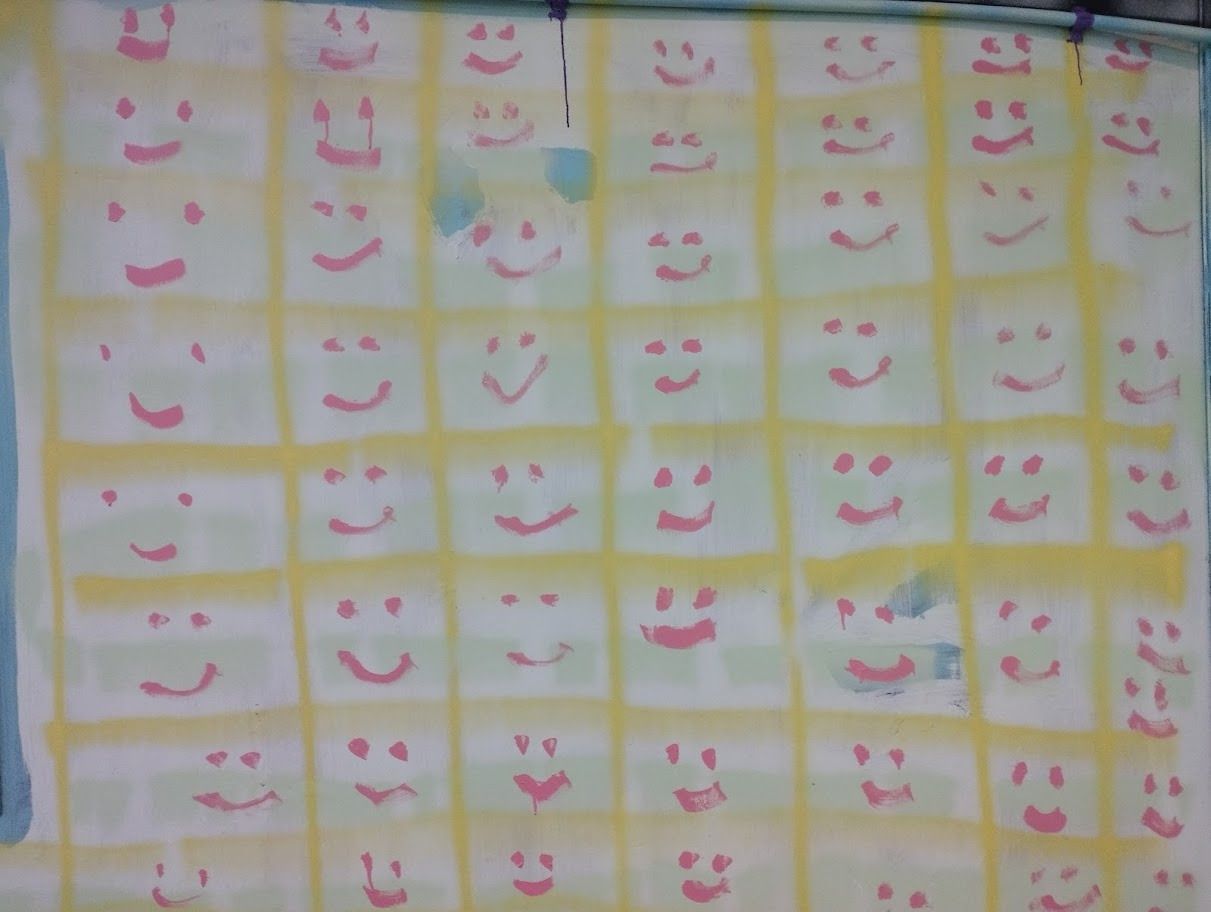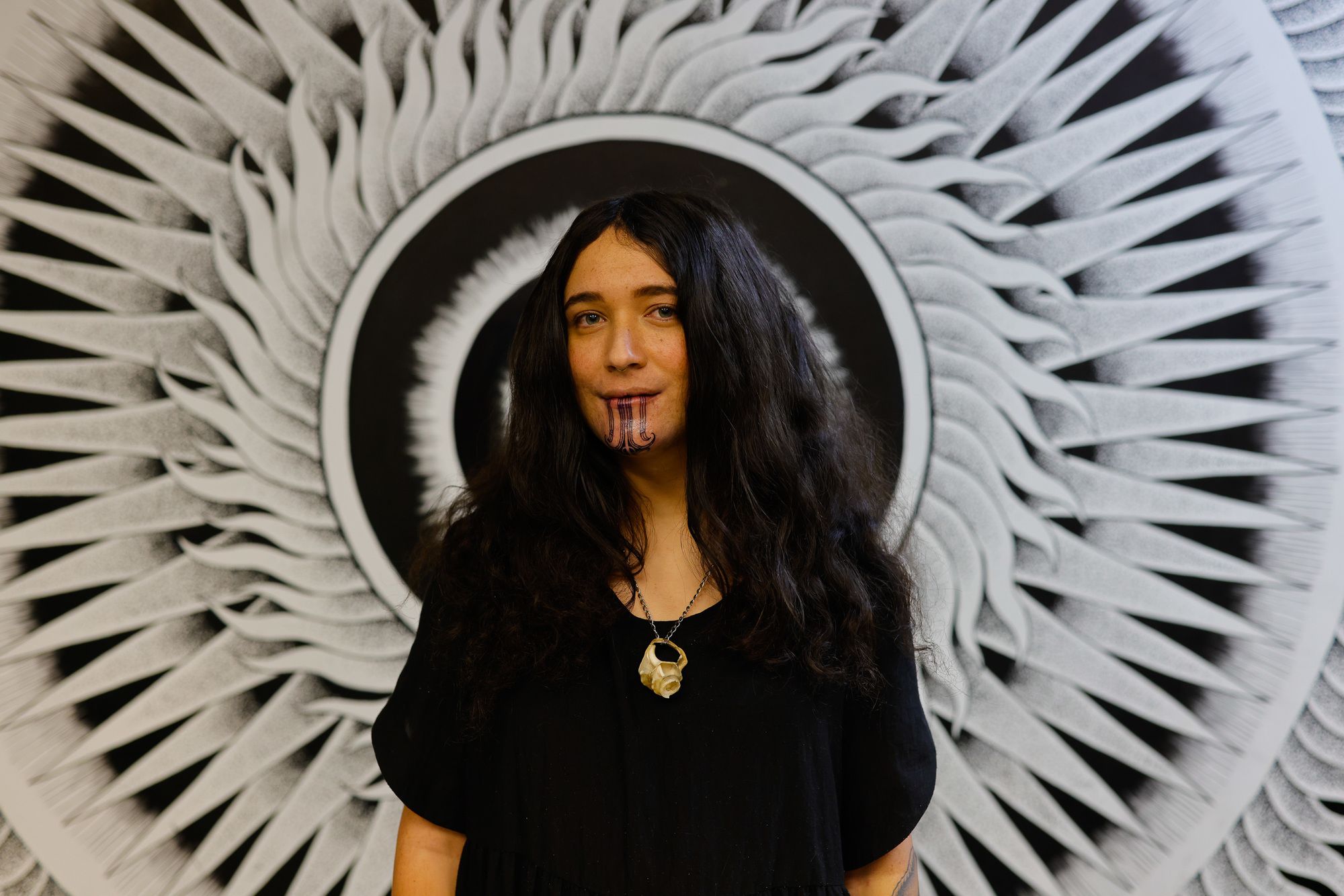Haunted by the Dump
Emmy Rākete talks about the tensions of creating art from trash and the dump underworld, at Auckland Community Recycling Centres Art Residency
I’ve moved house enough times to know that anything can be trash. Things I used every day, that had become part of the texture of my life, became utterly worthless with the thought of dragging them up an apartment stairwell. So I have hauled books, clothes, dishes, furniture – more things than I can imagine – out to the dump, to be interred in the earth. Trips to the dump feel like an encounter with the underworld. The remains of other people’s lives stacked up in a high cairn at a transfer station in Onehunga, watched over by the shades of waste management workers. We imagine all our refuse, after a time rotting in this purgatory, shedding its physical form and moving on to some unearthly realm. But this way of thinking is only a convenient pretence: none of it goes anywhere. Everything we use, everything we discard, stays exactly where we leave it. The dump is not a place where things vanish, but a place where things stay – whether we think about them or not.
Trips to the dump feel like an encounter with the underworld
The dump haunts all of my conversations with Rumen Rushev, one of the artists involved in organising the Auckland Community Recycling Centres Art Residency (ACRCAR) pilot project, which ran from July to November 2022. ACRCAR installed a group of ten artists in the Zero Waste Network in Glen Innes as part of the council-operated Auckland Community Recycling Centres programme. The Community Recycling Centres collect refuse, repairing what can still be used and recycling what cannot. They donate repaired goods, such as mattress bases, exercise equipment or simple electronics, or sell them for much less than they would cost new. The residency put the irreparable or unusable material at the disposal of the artists in residence, who used it in the creation of their work.
“In this country we just dig a hole somewhere and put everything in it,” says Rumen at our first meeting, gesturing in mild frustration. “Then when the hole is full – another hole.” He isn’t wrong. Nor, necessarily, is this a new way of dealing with the things we no longer need. Ruapara, earth pits used to dispose of a community’s waste, are ubiquitous at precolonial archaeological sites. When oral history isn’t specific enough, ruapara can be useful records of how a community lived. A pit full of moa bones and shells says something different about how a community fed itself than does a pit full of broken kāheru, kō and other agricultural tools. Like archaeologists, the artists in residence worked to make meaning out of the things they found in the pit. Musical instruments from abandoned pianos by Adam Ben-Dror, jewellery from lawnmowers and bicycles by Angela Hu and Sena Park, Mad Max-style mobility scooters from old batteries. All of the residency art was playful. For Chris Berthelsen, who developed the scooters with Adam, this kind of back-and-forth between artist and material is the main appeal. With so much to play with, he asks me, who would need to buy anything? Despite the artworks’ concern with the crisis of waste management and disposal, the end of the residency still brought an end to the play. All of the art, with a few exceptions, ended up heading back to the dump.
Photo Credit: Rumen Rushev
“We were maybe renting the junk,” Rumen told me, almost apologetically. “People threw it away, and it was on its way to the dump – and then, for a little while, we took the junk and made it into things. But at the end, it still had to be thrown away. Everything ends up in the pit.” This isn’t a new anxiety. The zero-waste movement has bobbed away in the popular consciousness for years. It is hypothetically possible, with lifestyle changes, to produce very little waste. Advocates for making this kind of individual commitment to trashlessness argue it isn’t hard to do if you take it seriously. But the point is that a garbage-free life is something you have to work at in order to achieve. Unless you choose to radically alter your lifestyle, you will go about shedding a trail of litter in your wake. Our default lives, the way things go for the broad mass of people in this country, are immensely wasteful. The dump is a presumption of everyday life. Our world is structured such that the dump is at the end of it.
Photo Credit: Rumen Rushev
The dump is not just a place, but also a function. It is part of what Karl Marx calls the relations of production – the economic bedrock upon which everything in society rests. We have, on the one side, commodity production. When we produce usable things – saleable things – we produce commodities. Most of these commodities take the form of consumer goods, like the pile of old books I had in my home. On the other side, we have consumption. I bought all the commodities that I needed and used them up, resulting in a neat profit for the capitalist who owns the book factory. The residue of our consumption, all the busted paperbacks, food waste and scuffed shoes, piles up around us like – well, like trash. Just as capitalism produces surplus value, which accumulates in the pockets of the rich, it produces surplus trash, inert toxins with no further role in the system.
For the cycle of production and consumption to keep turning, the trash has to be disposed of. However, the garbage keeps bursting its bounds as the magnitude of both capital accumulation and waste disposal increases. Community ruapara sufficed until the process of colonisation brought with it industrial production – flooding waterways with leached filth. My childhood home was built on the site of one of the city tips that replaced ruapara – the shallow topsoil meekly scraped over the refuse constantly gave way, dumping you onto hidden glass and scrap metal. Even municipal tips choked when New Zealand came to depend on the super-exploitation of labour in the third world for cheap imported goods. With the sheer volume of trash, waste disposal within city limits became impossible. Today, transfer stations compact it down, to be shipped out to remote landfills. The dump is how the earth is made to swallow up all of capitalism’s poisons and fumes.
My childhood home was built on the site of one of the city tips that replaced ruapara
In this sense, ACRCAR still hasn’t managed to break out of the cycle. Just like Rumen fretted to me, everything – all the leftovers of production and consumption – ends up in the pit. I’ve noticed a tendency among artists to hope the work itself can constitute some kind of political activity. Reflecting on his life and his opposition to the American war against Vietnam, the writer Kurt Vonnegut noted that “every respectable artist in this country was against the war. It was like a laser beam. We were all aimed in the same direction. The power of this weapon turns out to be that of a custard pie dropped from a stepladder six feet high.” This shouldn’t be surprising, but neither should it be disappointing. Art reflects reality, but is not reality itself. The map is not the territory, and that’s okay. Art is often about politics, but, on its own, a piece of art cannot itself be a political intervention. Politics is a struggle – a clash between opposing classes for control of production and the wealth that this process creates. Pieces of art cannot win that struggle, but they can help to mobilise people to participate in it.
Photo Credit: Rumen Rushev
One of the most intriguing aspects of ACRCAR was how it applied the idea of the artist in residence. Residencies are not a new concept. The logic behind them is, frequently, to facilitate a kind of retreat from the world so an artist’s personal vision can be realised without interference. For introspective, personal work, this model makes sense. In my creative life, making art is mostly something I do for my own enjoyment – if others are interested in reading it, that is nice. On the other hand, in my life as a community organiser with People Against Prisons Aotearoa, I express myself for instrumental reasons. Articles in our prisoner newsletter Take No Prisoners, media interviews, even social media posts – these are not just expressions of my inner soul, but a deliberate attempt to engage with people, organise them and direct them. I take pride in my craft. Māori are an oratory culture, so whaikōrero is an important artform to us, but I work at it as a way of reaching others. Art doesn’t have to be about retreating. It can also be about advancing.
Despite the difficulties the artists found in escaping from the inevitability of the dump, ACRCAR did advance in an important way – one that could represent a breakthrough for contemporary art. Where other residencies remove artists from the world, ACRCAR puts artists squarely into it – specifically, into the worlds of other people. The residency was attached to the Auckland Community Recycling Centres programme, a piece of public infrastructure. Ordinary people use the recycling centres to drop off refuse, repair their belongings, or purchase things they need. These centres are part of people’s lives. By putting artists, and their craft, into the recycling centres, the residency busts out of the ‘unfriendly white cube’ of contemporary art galleries.
Art doesn’t have to be about retreating. It can also be about advancing
The ubiquitous, sterile environments art is displayed in go a long way towards explaining why art is perceived – often correctly – as isolated, aloof and bourgeois. The writer Whitney Burkett argued that this white cube gallery “elevates art above its earthly origins, alienating uninitiated visitors and supporting traditional power relationships.” In Aotearoa the most glaring of these relationships are racial – between coloniser and colonised – and classed – between exploiter and exploited. Even down to the geographical locations of galleries, the structure of the art scene works to exclude brown and working-class people. Spaces that successfully defy this trend, like Onehunga’s vibrant, political, exciting Wheke Fortress, only do so with conscious and deliberate effort. The structural exclusivity of art is a consequence of the economic structure of capitalist societies. Auckland is a rigorously segregated city, as any glance at a decile map will show. Art’s earthly origins vanish, as the earth is divided more and more sharply into those who are and are not afforded the time to simply think.
ACRCAR gestured to a profoundly earthly possibility for how art could be done. It made use of public infrastructure in order to facilitate encounters between ordinary working-class people and the process of creating art. Existing artistic institutions have so far proven unable to create a truly popular arts culture. Public infrastructure, by its very nature, intersects with the lives of working-class people. We move through public-transport centres, schools, public parks. All of these are spaces that shape the working-class experience of daily life, and all of them are at least nominally subject to democratic control. They are, at least on paper, already ours. Future projects must make use of these already-existing venues to advance into ordinary people’s daily lives. This approach does not restrict art to unfriendly white boxes that working-class people may (or, more likely, may not) approach. It makes artistic expression an unavoidable part of how people go about their lives. Projects like artists’ residencies in bus stations or on train lines will introduce play, curiosity and creativity into people’s routines, opening them to the possibility that they too could be an artist.
down to the geographical locations of galleries, the structure of the art scene works to exclude brown and working-class people
More than just enriching popular culture, these projects will become vehicles for social movements. Mainstream environmentalism has relied on appeals to individuals to change their lifestyles, and is powerless to exert any kind of control over the process of production, allowing the trash to keep on piling higher. The artists of ACRCAR represented their environmentalist aspirations in the form of their work, but, as Rumen notes, did little to advance the political struggle necessary to actually win the war on waste. If future projects continue to piggyback off public infrastructure, artists will be able to directly engage with new audiences about the conflicts we face. We can leverage existing institutions and spaces to reach one another and to organise, not as individuals but as collectives. It is this kind of communal power that will let us build a future that does not, unlike the rest of capitalism’s waste, end up in the dump.
